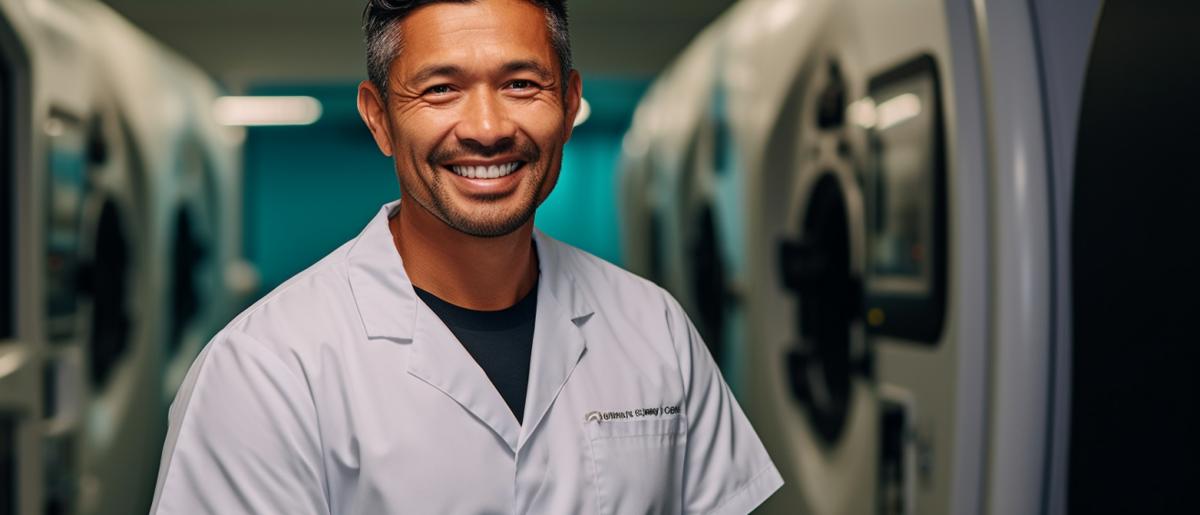

Diagnostic Imaging Service Providers play a crucial role in modern healthcare, helping doctors and specialists make accurate diagnoses and develop appropriate treatment plans. To effectively manage the vast amounts of medical imaging data generated each day, these providers rely on advanced technology like PACS (Picture Archiving and Communication System). PACS is a digital imaging solution that allows Diagnostic Imaging Service Providers to store, access, and share medical images and related patient information electronically. It replaces the traditional film-based approach, offering numerous benefits and improving the efficiency of diagnostic workflows. One of the primary advantages of PACS is its ability to enhance collaboration and communication among healthcare professionals. With PACS, medical images can be securely accessed and shared across different departments and locations, enabling seamless collaboration between radiologists, referring physicians, and specialists. This facilitates quicker consultations, second opinions, and multidisciplinary discussions, leading to improved patient outcomes. Another significant advantage of PACS is its efficiency in managing and organising medical image data. Instead of dealing with stacks of physical films and records, PACS stores data digitally, allowing for quick and easy retrieval of images whenever needed. The system also provides advanced search and retrieval functionalities, enabling healthcare professionals to locate specific images or patient cases efficiently. Additionally, PACS integrates with other clinical systems, such as Electronic Health Records (EHRs), creating a unified and comprehensive patient record. By adopting PACS, Diagnostic Imaging Service Providers can also reduce costs associated with film-based processes, such as printing, storage, and transport. PACS eliminates the need for printing films, thereby reducing environmental impact and saving valuable resources. Furthermore, with PACS, radiologists can interpret images remotely, enabling providers to expand their services to underserved areas and improve access to healthcare.
Compare over 40+ lenders with one application.
Medical equipment finance is a specialised form of financing that helps Diagnostic Imaging Service Providers in Australia acquire the necessary equipment to enhance their diagnostic capabilities. It is designed to meet the unique needs of healthcare providers When it comes to setting up or upgrading a diagnostic imaging facility, the cost of acquiring advanced equipment can be quite substantial. Medical equipment finance provides a solution by allowing providers to spread the cost of the equipment over time, instead of making a large upfront investment. This helps to manage cash flow more effectively and allocate resources to other critical areas of the business. In Australia, medical equipment finance options are offered by various financial institutions and lenders. Providers can choose from different financing structures, such as equipment leases or hire purchase agreements, depending on their preferences and financial circumstances. These arrangements typically involve regular payments over an agreed-upon term, which allows providers to budget and plan their expenses more efficiently. To access medical equipment finance, Diagnostic Imaging Service Providers need to meet certain eligibility criteria, such as having a solid credit historey and financial stability. Lenders will often assess the provider's ability to repay the loan or lease through a thorough evaluation process. It's important for providers to gather the necessary documentation, such as financial statements and business plans, to support their application. Medical equipment finance is specifically tailored to the unique requirements of the healthcare industry, offering flexible terms and competitive interest rates. Providers can acquire state-of-the-art diagnostic equipment while still managing their cash flow effectively. By partnering with lenders who specialise in medical equipment finance, providers can access the funds they need to acquire the equipment that will enable them to deliver high-quality diagnostic imaging services to patients across Australia.
Learn about eligibility and how to apply.
When considering the acquisition and instalation of a PACS (Picture Archiving and Communication System) for Diagnostic Imaging Service Providers in Australia, it's important to understand the associated costs involved. The expenses can vary depending on several factors. The cost of PACS acquisition generally includes the software licence, hardware infrastructure, and implementation services. Diagnostic Imaging Service Providers can choose between different software vendors and packages based on their specific needs and budget. The price can range from tens of thousands to hundreds of thousands of dollars, depending on the size of the facility and the desired functionalities. Hardware infrastructure costs involve the necessary servers, storage devices, workstations, and networking equipment to support the PACS. The complexity and scale of the imaging facility will impact the hardware requirements and, subsequently, the cost. Providers should also consider ongoing maintenance and support expenses associated with the hardware infrastructure. Implementation services, which include system instalation, configuration, and training, are an essential component of the PACS cost. The complexity and customisation requirements of the implementation process may influence the expenses involved. It's crucial to work closely with experienced vendors or consultants who can guide the providers through the instalation process and ensure a smooth transition. Additionally, providers should consider any potential additional costs, such as data migration from existing systems, integration with other clinical software, and future upgrades or expansions. Taking these factors into account will help Diagnostic Imaging Service Providers in Australia to plan and budget effectively for the acquisition and instalation of a PACS system that meets their specific needs.
Calculate your repayment estimates and more.
Medical equipment finance for PACS (Picture Archiving and Communication System) brings several advantages, including enabling Diagnostic Imaging Service Providers to secure the necessary medical equipment for their operations. Here are some of the advantages:
Flexible Payment Options
With medical equipment finance for PACS purchases in Australia, Diagnostic Imaging Service Providers have the advantage of flexible payment options. Instead of making a large upfront investment, providers can choose to spread the cost over a period of time, making it easier to manage cash flow and allocate resources to other critical areas of the business.
Conserves Working Capital
By opting for medical equipment finance, providers can conserve their working capital. Rather than tying up a significant amount of capital in purchasing a PACS system outright, providers can use that capital for other essential expenses, such as hiring skilled staff, marketing efforts, or expanding their facility.
Up-to-Date Technology
With the rapidly evolving nature of medical technology, it's important for Diagnostic Imaging Service Providers to stay up-to-date. Medical equipment finance allows providers to acquire the latest PACS technology without having to wait until they have saved enough funds. This ensures that providers can offer cutting-edge diagnostic services to their patients, enhancing their competitiveness in the industry.
Tax Benefits
Medical equipment finance offers potential tax benefits to Diagnostic Imaging Service Providers. Depending on the specific finance structure and the Tax Office regulations in Australia, providers may be eligible to claim deductions on the interest paid and depreciation of the PACS system. This can help reduce the overall cost and improve the financial efficiency of the investment.
It is no secret that purchasing medical equipment, such as a Picture Archiving and Communication System (PACS), can be a significant investment for Diagnostic Imaging Service Providers in Australia. Fortunately, there are options available to help alleviate the financial burden. One such option is medical equipment finance, which can provide several tax benefits and deductions for businesses. When using medical equipment finance to acquire a PACS, Diagnostic Imaging Service Providers may be eligible for tax deductions on the interest paid. These deductions can help reduce the overall cost of financing the equipment, making it a more affordable option for providers. Additionally, businesses can also claim depreciation on the PACS as a tax deduction over time. The Australian Tax Office (ATO) recognises the importance of medical equipment in providing quality healthcare services, and as a result, offers tax incentives for businesses investing in such equipment. These incentives aim to support providers in their efforts to improve patient care and diagnostic capabilities. It is crucial for Diagnostic Imaging Service Providers to stay informed about the tax benefits and deductions associated with medical equipment finance. Consultation with a qualified accountant or tax advisor is recommended to fully understand the specific tax advantages available and how they apply to individual circumstances. By taking advantage of these tax benefits and deductions, Diagnostic Imaging Service Providers can make the most of their investment in a PACS system. Not only does medical equipment finance provide a way to acquire essential equipment, but it also offers financial advantages that can contribute to the long-term success of the business.
In summary, medical equipment finance offers Diagnostic Imaging Service Providers in Australia a viable solution for acquiring essential technology like a Picture Archiving and Communication System (PACS). By utilising medical equipment finance, providers can overcome the financial barriers associated with purchasing a PACS and gain access to the latest diagnostic imaging technology. With tax benefits and deductions available for businesses investing in medical equipment, providers can potentially reduce the overall cost of financing the PACS. Deductions on the interest paid and depreciation of the equipment can help alleviate the financial burden and improve the affordability of the investment. It is important for Diagnostic Imaging Service Providers to explore the tax incentives provided by the Australian Tax Office (ATO), consult with qualified professionals, and fully understand the potential advantages available to their specific circumstances. This knowledge empowers providers to make informed decisions about acquiring a PACS and maximise the benefits of medical equipment financing. By leveraging medical equipment finance, Diagnostic Imaging Service Providers can enhance their diagnostic capabilities, improve patient care, and strengthen their overall operations. The availability of such financing options ensures that providers can invest in the necessary equipment without compromising their financial stability or growth potential.
To estimate your monthly repayments and the total cost of the loan, input the loan amount, loan term and interest rate into the calculator below. This helps you plan your budget and choose the most suitable loan terms.
These helpful FAQs will help you find the answers you need. If you can't find what you're looking for, you can request a callback below.